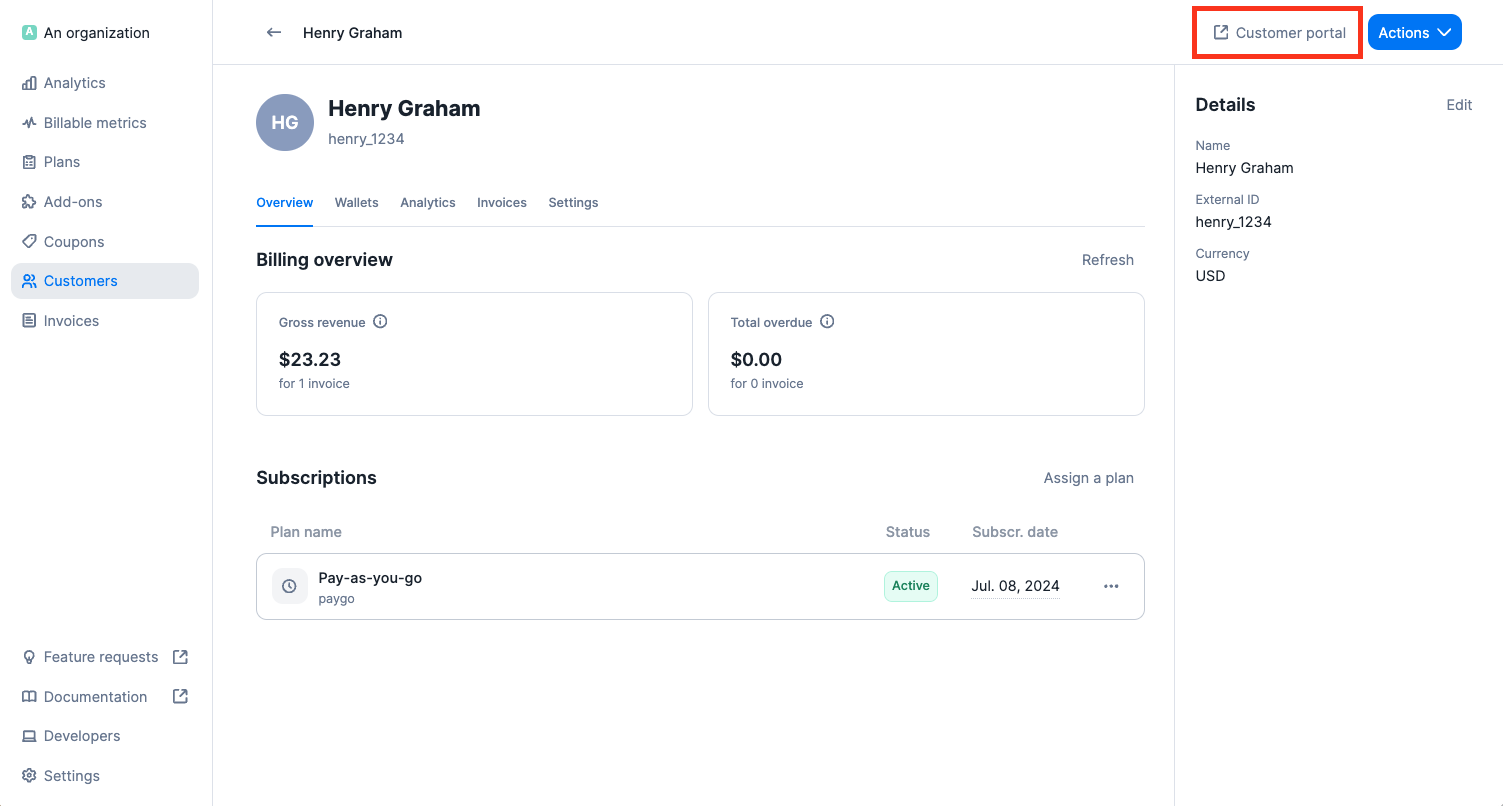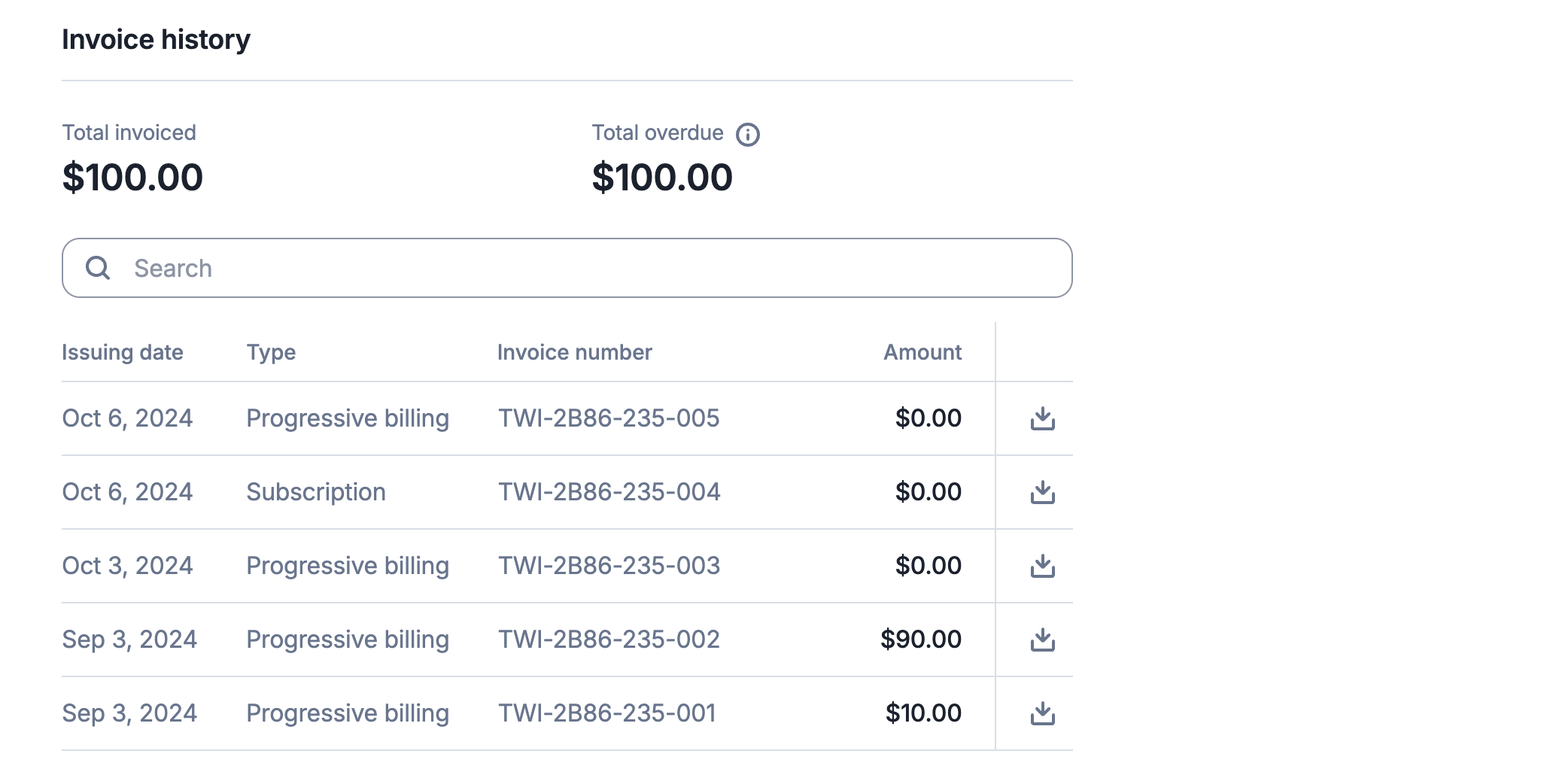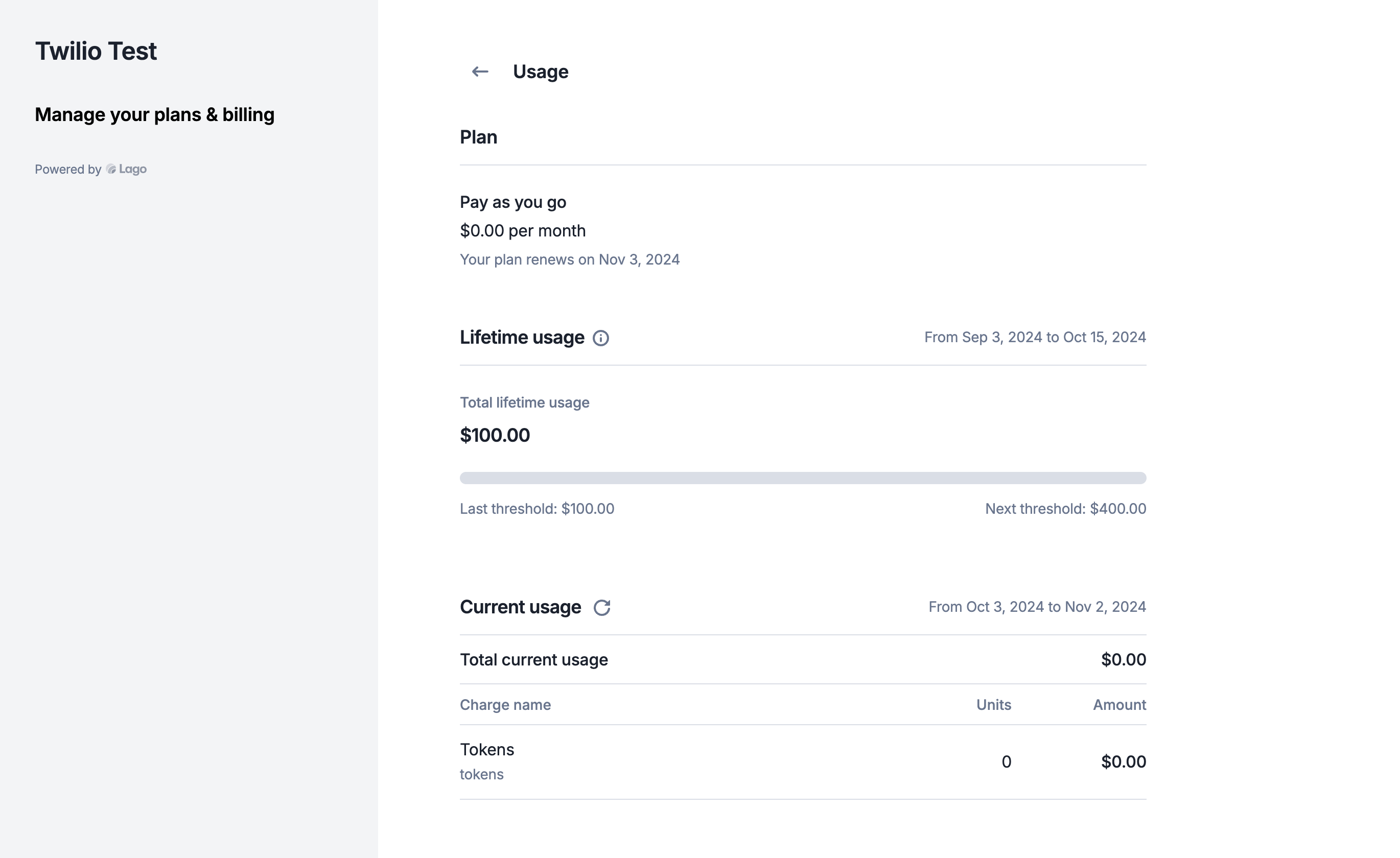Generate a customer portal link
To generate a customer portal URL that can be embedded into your product, you have two options:- Use the API endpoint; or
- Click the Customer Portal link on a specific customer details view.

Customer portal access
Embedding the dashboard
You can also use the API to generate an embeddable Customer Portal that can be displayed in your application by using an iframe. To do so, use the endpoint/customers/:external_customer_id/portal_url to generate an embeddable URL that can be displayed in your user interface.
For security reasons, the token returned by the API expires after 12 hours. Therefore, it is important to use the endpoint and generate a new token every time a customer refreshes or accesses the billing page.
Customer portal preferred language
By default, the embedded portal is displayed in English. However, you can easily change the language for a specific customer by adjusting thedocument language in their settings. To access this feature, follow these simple steps:
To access document language settings:
- Go to the specific customer’s profile;
- Click the Settings tab;
- Edit the document language section; and
- Select the preferred language.
If the language you are looking for is not yet available, please visit this page.
Customer portal information
1. Invoice history
The invoice history section provides a summary of both total invoices (everything that has been invoiced since the beginning) and overdue invoices (all the invoices past their due date, which are due). Your customers can know where they stand in one glance. The Customer Portal allows your customers to retrieve all past invoices and download them with ease. Lago displays useful billing information such as the issuing date, invoice number, amount, and payment status (paid or unpaid). Additionally, your customers can filter the list and search for a specific invoice.
Invoices list - Customer Portal
2. Customer information
In addition to viewing their invoice list, customers can retrieve essential billing information, including legal name, tax identification number, billing email, and billing/shipping addresses. Customers can also update this information directly through the portal, ensuring that their billing details remain synchronized with the latest data.
Customer information - Customer Portal
3. Plans and usage information
In addition to viewing their invoices and customer details, customers can access their subscriptions and usage directly through the portal. For subscription details, they can view key information such as the plan name, recurring fee, and subscription renewal date. Customers also have real-time access to comprehensive usage details, including:- Total lifetime usage and the next threshold for subscriptions using progressive billing;
- A detailed usage report, showing the number of units consumed and associated costs; and
- A full breakdown of usage by billing filters and groups.

Plans and usage - Customer Portal
4. Prepaid credits information
The customer portal provides your customers with real-time access to their prepaid credit balance, showing the remaining credits based on their current usage. Additionally, customers can top up their paid credits, ensuring their wallet is always sufficiently funded.
Prepaid credits - Customer Portal